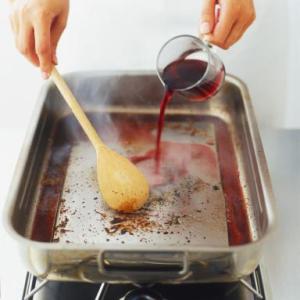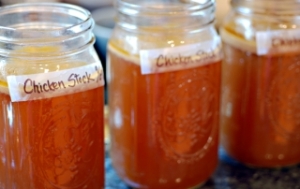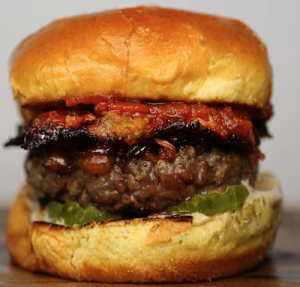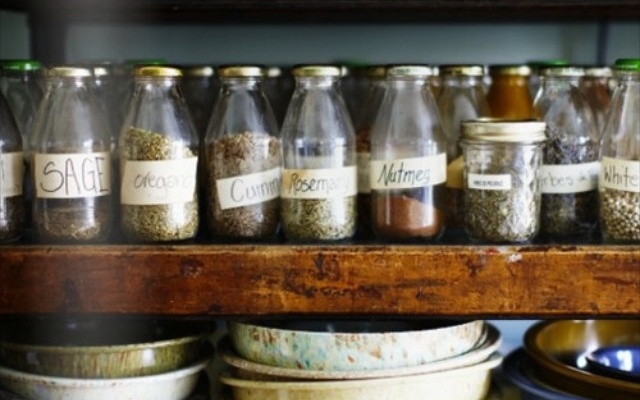
9 Cooking Tips Straight From Chicago’s Hottest Chefs
Part of being a true -ista is knowing your way around the kitchen, and we don’t mean knowing how to order from Seamless.
Ready to up your game but need a few cooking tips, especially with Christmas right around the corner? Get ready with these 9 cooking tips straight from Chicago’s hottest chefs.
1. Roasting a Chicken
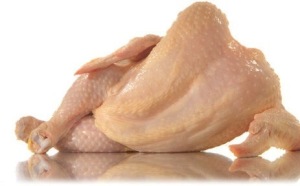 It may look like a giant feat but a chicken is pretty good at roasting itself. Start off by removing the gizzards and rinsing and drying it off. Stuff peeled/sliced garlic and various herbs like rosemary and sage underneath the skin, heavily season the outside with salt and pepper, pour a little white wine in the cavity and stuff the sucker with half a lemon or more herbs and root vegetables.
It may look like a giant feat but a chicken is pretty good at roasting itself. Start off by removing the gizzards and rinsing and drying it off. Stuff peeled/sliced garlic and various herbs like rosemary and sage underneath the skin, heavily season the outside with salt and pepper, pour a little white wine in the cavity and stuff the sucker with half a lemon or more herbs and root vegetables.
It’s best to truss the bird to maintain moisture, but if you don’t have kitchen twine, I’ve had luck using skewers or just tucking the legs and wings underneath the belly. Throw it in a roasting pan, put a few pats of butter on the top, cover it and cook it in the oven at 375 degrees. Sit back and just listen for the crackle. After about 30 minutes, uncover to brown your skin. Once it’s almost done, drop a chopped herb of your choice, like thyme, into the fat drippings that have collected in the pan — the heat will open up the herbs and you can glaze the bird with this delicious concoction.
For a quick one pot meal, Joe Campagna – author of Chicago Food Snob and former chef – recommends adding some root vegetables, onions and garlic underneath your chicken for some chicken fat roasted vegetables. Campagna also recommends adding a little stock to the bottom of the pan so the vegetables don’t burn and finishing off with herbs and butter. PS. Save the bones for later.
2. Deglazing
You decided to make chicken or a steak and are left with half of it stuck on the bottom of the pan. Don’t worry, those bits are called fonds, which are everything that non-stick pot makers despise. You are still in the game here and can use a simple trick called deglazing to keep going. Just add a liquid of your choice, (wine, vinegar, stock, etc.) and stir to get everything off the bottom. Throw in some butter or oil, sweat some onions until translucent, and add some wine and salt and more butter if you’re feeling devilish. Remove from the heat to prevent further cooking, and now you have a sauce at play.
Matt Troost, the Executive Chef at Three Aces and the newly opened Charlatan, recommends an emulsified butter sauce for an easy go-to:
Heat a pan on medium high, throw in a chunk of butter and let the butter brown as it melts. (Don’t shake it, chef warns.) Add an almost equal amount of stock, vinegar, or anything else you want to make into a sauce and emulsify (another food word for blend) it. If too thin, reduce it by simmering longer, if too fatty and broken, add more liquid.
3. DIY Salad Dressing
It’s so easy to buy dressing from the bottle, but most are laden with high fructose corn syrup. The basic vinaigrette uses simple balsamic vinegar, olive oil and salt and pepper whisked together until emulsified.
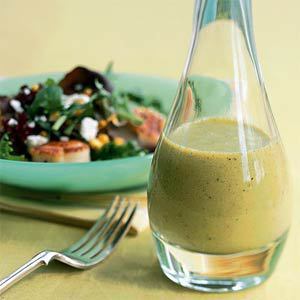
For an even better, yet still easy, option try this Buttermilk-Herb dressing from Red Door Executive Chef, Troy Graves:
Add 2 egg yolks into a mixing bowl, then add a tablespoon of honey and a tablespoon of white balsamic vinegar. Whisk in a cup and a half of grapeseed oil and thin it out with buttermilk. Season with salt and pepper, add a third of a cup of chopped herbs (parsley, chervil & chives) and finish with lemon zest.
4. Homemade Stock
Once you use stock in the place of water, you will never want to go back. It’s great for making quinoa and braising vegetables. Stock also adds depth to any dish. There are many great packaged stocks out there but I feel there’s something to be said for making and freezing your own on occasion. I usually make a chicken stock as it imparts more flavor, but I’ll sometimes make a vegetable stock when I have produce going bad, particularly mushrooms.
For a basic chicken stock, here’s an important cooking tip: use roasted bones or the remains of your roasted chicken (see #1). Nick Lacasse, executive chef at mfk. recommends making sure to trim off as much fat and skin as possible from the bones so that the stock is clean and not greasy. If you don’t have roasted chicken bones lying around, throw cheap cuts of chicken into a large pot — thighs and drumsticks are best and most butchers sell them by the quarter — an onion cut in half, peelings still on, a couple of whole carrots and celery sticks, greens of a leek, a bouquet garni (which is just French for a bundle of herbs tied together, a half a head of garlic, skins on as well and bay leaves. (If you can get neck bones from your butcher, that would also be great, too.) The final trick is straining — first through a colander and then through a mesh screen. You’ll be shocked at what this does to the color and clarity of it. Throw some into freezer bags or ice trays if you have them laying around, and leave the rest for using during the week.
Pro tip: This former chef roasts his onions before, and I have a feeling that isn’t a bad idea.
5. Leeks – the Other Onion
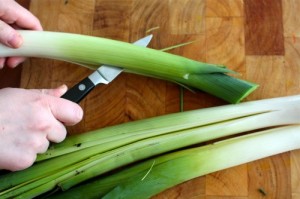 Leeks have a mild onion-y taste and can generally be substituted for onions or shallots, which is great if onions aren’t your thing. I usually cut the stalk in half lengthwise (wash them as dirt can get into the different layers) and slice them thin horizontally. They are great in a raw salad and disappear easily yet still offer great flavor in hot dishes and soups. Plus they are much easier to chop (no tears).
Leeks have a mild onion-y taste and can generally be substituted for onions or shallots, which is great if onions aren’t your thing. I usually cut the stalk in half lengthwise (wash them as dirt can get into the different layers) and slice them thin horizontally. They are great in a raw salad and disappear easily yet still offer great flavor in hot dishes and soups. Plus they are much easier to chop (no tears).
“One neat thing you can do in soups, stocks or sauces,” says Campagna, “is use the outer hardy green part as a wrapping for your bouquet garni.” Loving it.
6. Get French with Roux
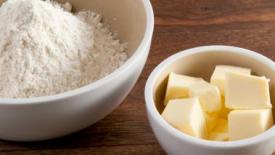 Roux is the base of a lot of French cooking and acts as a great thickener. It is also the start of all good gumbos. It’s a simple combination of equal parts flour to fat (oil or butter or an animal fat like duck fat) whisked together in a pan over medium heat until it reaches the desired color. (Be careful not to have the heat too high or you’ll burn it.)
Roux is the base of a lot of French cooking and acts as a great thickener. It is also the start of all good gumbos. It’s a simple combination of equal parts flour to fat (oil or butter or an animal fat like duck fat) whisked together in a pan over medium heat until it reaches the desired color. (Be careful not to have the heat too high or you’ll burn it.)
In most instances, like a béchamel sauce, you will just need it to be a dirty white. If you’re making a gumbo, cook it until it’s dark brown. Lacasse has a unique spin on a holiday gravy:
Pro tip: If you don’t have flour but still need a thickener for your sauce, you can create a slurry — cornstarch whisked with water.
7. Cutting Grape Tomatoes
You love grape tomatoes in your salad but they can be time consuming to cut. There’s a one step slice for that problem: just place a bunch between two plastic container lids or butter plates and slice right through as if you were halving a bun. Voila! Make sure your knife is long enough to go through both plates. I use a long bread knife. Or if you need a visual, here’s a video demonstrating:
8. Roasted Garlic
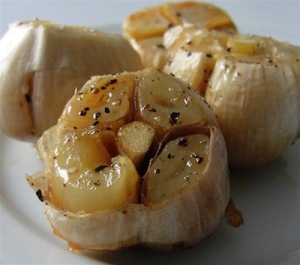 Garlic makes everything delicious. Roasted garlic kicks it up a notch. All you have to do is take a head of garlic (look for heads that are tightly packed with white skins), place it on some foil, pour olive oil over it, tighten it up and throw it in the oven at 400 degrees for about 45 minutes to an hour. Your nose will tell you when it’s ready (or if your sniffer isn’t working, after about 40 minutes, check on it).
Garlic makes everything delicious. Roasted garlic kicks it up a notch. All you have to do is take a head of garlic (look for heads that are tightly packed with white skins), place it on some foil, pour olive oil over it, tighten it up and throw it in the oven at 400 degrees for about 45 minutes to an hour. Your nose will tell you when it’s ready (or if your sniffer isn’t working, after about 40 minutes, check on it).
9. The Perfect Burger
“A great burger starts with good quality meat,” says John Scholl from Chicago’s own meat-loving ManbQue. “It’s best to grind the meat yourself, but if you’re unable to – have a butcher grind a 70/30 blend. It may sound like a high fat content, but fat equals juices.”
Seasoning is also important but it’s hard to tell if you’ve added enough spice, however. To remedy that, test a small meatball before making your patties. Skip adding in the kitchen sink on this one, a little salt, pepper and cumin (for me) should do.
“When cooking the burger, don’t smash it down as you’re smashing the juices right out of them,” said Scholl. “Instead, buy a food thermometer and cook for the doneness temperature that you want (rare, medium, well). Finally, a quality burger deserves quality bread. Skip the cheap burger buns and wrap that meat in a pretzel, brioche, or kaiser roll.”
Pro tip: While grilling is great for that charbroil flavor, winter makes that hard to do, and a flattop or plancha works great during the winter months and helps keep those juices contained that usually fall down into the fire. My personal recipe: sirloin burger, brie cheese, onion jam and arugula on a pretzel bun. For reals.
Have your own cooking tips to share? Tell us below, or just invite us over for dinner, we’ll bring the wine and the stories.

